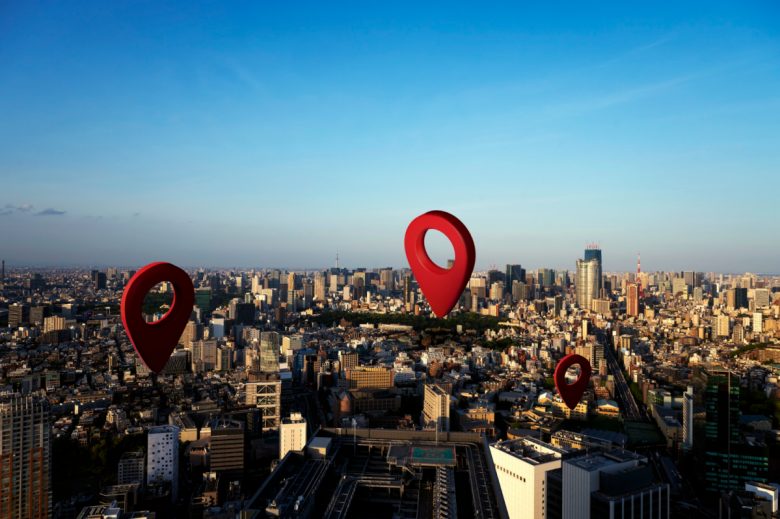It’s essential for companies of all sizes to create marketing campaigns that hit the bullseye with their target audience. One strategy that has gained momentum over the past years, delivering impressive results, is a type of mobile marketing called location-based marketing.
So, what’s the buzz all about? Well, it’s a game-changing approach that enables businesses to connect with their customers on a more personal level, right where they are. With our phones practically glued to our hands these days, location-based marketing empowers brands to send tailored notifications or triggers to customers when they’re in a specific location. By tapping into users’ location data through social media apps or smartphone programs, brands can now take customer experience to new heights.
When companies are able to use location data to target consumers, they gain the power to send timely, relevant messages that will actually resonate. That’s what you want, right? Knowing that a potential customer is near one of your stores so you can send a personalized offer or reminder – one that shows you understand their needs and priorities.
Data from The Good Push Index study shows that highly targeted push notifications drive 293% more responses than generic messages. To truly connect with audiences today, you need a more personalized approach that feels like it was made just for them. That’s where location-based marketing comes in.
Location data gives you the chance to make customers’ days a little brighter when an offer arrives. You show that you understand their needs and want to make their experience just a bit easier. This human connection, built on simple personalization can go a long way towards loyalty and advocacy over time.
Here are four types of location-based marketing that you can implement.
Geotargeting
Geotargeting offers companies an effective way to reach customers with relevant, localized offers based on their exact geographic location. This means that when users are within specific geographic coordinates, they get targeted with content. Businesses can then push notifications specific to that local context.
For example, when a user opens the Uber app in their city, UberEats can show special deals from nearby restaurants that deliver. This provides value to the user while promoting Uber Eats.
The key benefit is that geotargeted offers feel immediately relevant to users as businesses offer content tailored to the specific needs and interests of people in a particular location. This localized relevance translates into increased clicks, leads, and eventually sales with relatively low costs. Geotargeted campaigns are easy to track, measure, and optimize over time.
However, geotargeting has limitations. The audience is local by nature, so it won’t be a good fit for businesses targeting a global market. Some users may also be opposed due to privacy concerns. And since many brands use geotargeting, competition can be high within local markets.
Beaconing
Beaconing has transformed the way companies engage with customers in this digital age. How? This location-based marketing strategy utilizes small Bluetooth-enabled devices called beacons that allow brands to precisely target users within a certain physical range. An industry that has used this strategy extensively is retail, with companies like Target using beacons to enhance the shopping experience.
Imagine strolling through Target, armed with the store’s app on your smartphone. You can navigate through different aisles and find the specific product you are looking for. The app provides real-time location on the store map, guiding you with aisle numbers and even highlighting any running promotions. It’s like having a personal shopping assistant right in your pocket. Pretty cool, right?
For instance, Target uses beacons to help shoppers navigate through the aisles to locate specific products. The Target app can show you real-time location on the store map, think Google Maps but for the Target store you’re in. You just click a product you want to purchase to see its location on the map, and you’ll be prompted with the aisle number and any current promotions for that item. Pretty exciting, right?
Beaconing not only drives foot traffic and encourages purchases but also provides valuable insights into customer preferences and behavior. And this is what businesses want – analyze the data they get, refine mobile marketing strategies, and create more impactful campaigns.
Drawbacks of Beaconing
However, like any marketing strategy, beaconing has some drawbacks. One concern is the potential increased battery drain on smartphones due to continuous Bluetooth connectivity. You also have concerns about signal interference from physical barriers or other electronic devices that can disrupt beacon signals, affecting the accuracy and overall effectiveness of this approach. Additionally, beaconing relies on users having specific apps installed on their smartphones that can limit its reach to a broader market.
Geofencing
Geofencing focuses on boundaries within a specific geographic area. When individuals enter those parameters, they become a target of this location-based marketing approach. A business can use geofencing to target people who enter a competitor’s store or who are near their own store.
A memorable campaign utilizing geofencing is Burger King’s Whopper Detour campaign in 2018. By simply downloading the Burger King app and being within 600 feet of a McDonald’s, customers could activate a mouthwatering 1-cent Whopper offer. The app then directed customers away from McDonald’s, guiding them to the nearest Burger King location to pick up their food within an hour. The result? An astounding 1.5 million downloads for the Burger King app – talk about captivating customers!
There are definitely some pros and cons when it comes to geofencing. On the bright side, geofencing allows businesses to send targeted messages based on where people are physically located. It’s like having a personal marketing genie who knows exactly where you are and sends you offers in real time! This can help drive foot traffic and give businesses a competitive edge by targeting people who are entering or leaving their competitors’ spaces.
There are downsides too, however. For one, it’s a bit costly to do geofencing compared to other location-based marketing strategies. Accuracy can become a challenge because of factors like signal quality and the individual’s device. It can also trigger false alerts or miss out on engaging with potential customers. Lastly, there are privacy concerns as it requires access to your device’s location, which can raise some eyebrows about privacy.
Geofencing is a powerful tool to reach and engage potential customers in particular geographic areas. However, it’s vital for businesses to strike the right balance and consider the user experience to ensure its success.
Mobile Targeting
Mobile targeting encompasses all types of location-based marketing campaigns. Customization is key, as companies are able to tailor campaigns to fit the audience based on location, interests, and demographics. In truth? It all boils down to creating that great moment of relevance.
Brands that utilize social media channels such as Facebook and Instagram are good examples of mobile targeting. If a user’s smartphone location is on, businesses can set up targeted ads that will only show up on people’s feeds if they are near your store or service area. This then gives businesses leeway to ensure that their social media content is interesting enough.
Effectiveness and efficiency come into play with targeted ads reaching the right audience. Brands aim for their messages to land in the right hands at the right time. What’s great about this is that when personalized content aligns with the audience’s interests, they get involved.
However, mobile targeting has drawbacks too. Ad fatigue can happen if users feel bombarded with too many targeted ads. Finding the right balance between reaching the audience and giving them space to breathe is crucial. Plus, dependence on accurate data is key. Inaccurate data leads to misdirected campaigns and wasted resources.
To access more insights on various mobile marketing strategies, check out our article on different types of mobile marketing.
Conclusion
It’s essential that businesses have a clear understanding of their target audience and mobile marketing goals, so they can create relevant campaigns that will catapult them to success. The key to succeeding in location-based marketing is to make tailored content that will be interesting to potential customers. The more hyper-local the content, the more attention-grabbing it will be for users.
It’s no doubt that location-based marketing has already reshaped the way businesses do marketing. It’s no longer just about putting out content but about being intentional and targeted as to where your consumers are present. Businesses want to engage with customers in a much more meaningful way, and location-based marketing could just be the solution they need.
Also read:
6 Disadvantages of Mobile Marketing
10 Mobile Marketing Tools that Will Elevate Your Marketing Efforts
7 Key Advantages of Mobile Marketing














Pingback: 5 Forms of Goal Advertising and marketing Methods You Ought to Know - Webbizmarket.com
Pingback: 5 Types of Target Marketing Strategies You Should Know - StartUp Mindset
Pingback: Understanding the Differentiated Targeting Strategy - StartUp Mindset
Pingback: Everything You Wanted to Know About Online Enterprise and Were Afraid To Ask ·
Pingback: 7 Types of Mobile Marketing to Understand - StartUp Mindset
Pingback: Mobile Marketing Best Practices - StartUp Mindset
Pingback: Understanding Location-Based Marketing – Joseph Odierno Buffalo
Pingback: Understanding Location-Based Marketing – Entrepreneur – Start, Run and Grow Your Business